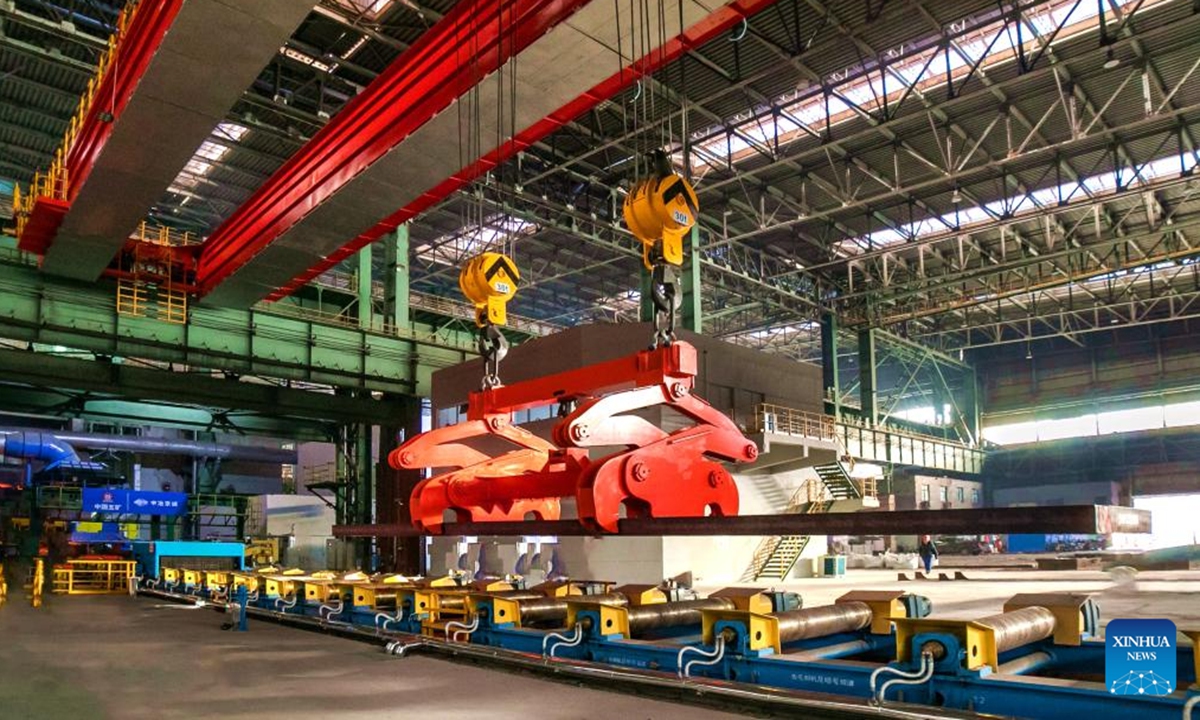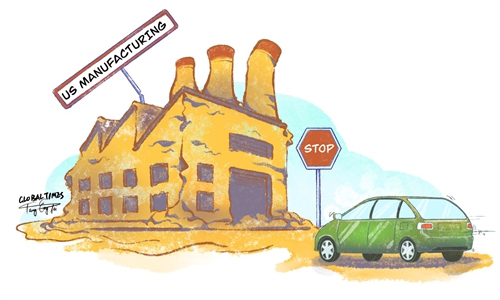
A steel auto panel rolls off a hydrogen-based production line of HBIS Group Co in Zhangjiakou, North China's Hebei Province, December 16, 2024. Photo: Xinhua
The Chinese steel industry is demonstrating remarkable development potential through its proactive green transformation and upgrades, which stands in stark contrast to the performance of the Western steel industry. This major divergence in the development trajectories of the steel industries in the East and West not only mirrors the profound changes in the global economic landscape, but also serves as a vivid testament to China's pursuit of a high-quality transition.Chinese steelmaking giant HBIS Group Co's hydrogen-based production line for steel auto panel was put into operation on Monday, according to China Media Group.
Hydrogen metallurgy is a steel-making process that utilizes hydrogen instead of coal, which significantly reduces carbon dioxide emissions. HBIS claimed the production line is the first of its kind in the world, Xinhua reported.
The application of this innovative hydrogen metallurgy technology not only showcases the technological prowess of the steelmaking group but also exemplifies the broader low-carbon transformation and upgrading of China's steel industry.
The steel industry has long been a subject of controversy due to its high energy consumption and substantial emissions. The Western steel industry is often viewed as a sunset industry, largely because, despite the industry's attention to and investment in environmental regulations and technological research and development, its transformation process continues to be slow and challenging.
However, in China, the steel industry is viewed as a sector with the hope of being a sunrise industry, as the transformation efforts bring it significant development and investment potential, particularly under a model that integrates low-carbon practices with product innovation.
The Chinese government has attached great importance to the technical transformation and upgrading of the steel industry, implementing a series of policy measures to encourage companies to adopt new technologies and processes aimed at reducing energy consumption and emissions while improving resource utilization efficiency. In this context, the Chinese steel industry is increasing its investment in research and development, promoting technological innovation, and continuously enhancing its environmental protection standards and production efficiency.
For instance, according to a paper published in the peer-reviewed journal Nonferrous Metals in November, compared to the five to six hours required by traditional blast furnaces, a new ironmaking technology "can complete the ironmaking process in just three to six seconds," which is not only faster and cheaper, but also better for the environment.
It is important to note that the green transformation of China's steel industry is not an isolated effort, and is aligned with the broader green transition of the Chinese economy and society.
According to the annual Central Economic Work Conference held in Beijing last week, efforts should be made to ramp up the green transition in all areas of economic and social development, with faster construction of new energy bases in sandy areas, rocky areas and deserts and the establishment of a group of zero-carbon parks, Xinhua reported.
The strategic policy guidance offers a clear direction and strong impetus for the industry's transformation and advancement.
At the same time, the innovative spirit and sharp market insight of steel companies fuel ongoing innovation to address the diverse needs of the market. China's steel industry has always been committed to extending and upgrading its industrial chain, consistently enhancing the added value and market competitiveness of its products. These efforts establish a solid foundation for the sustainable development of China's steel sector and strengthen the industry's overall competitiveness.
Overall, the development of the steel industry exemplifies the Chinese economy's ability to explore innovative pathways and achieve sustainable growth in the face of global challenges. Amid significant shifts in the global economic landscape, the Chinese economy offers valuable wisdom for the world's transition to sustainable development through its distinctive model of green development.



